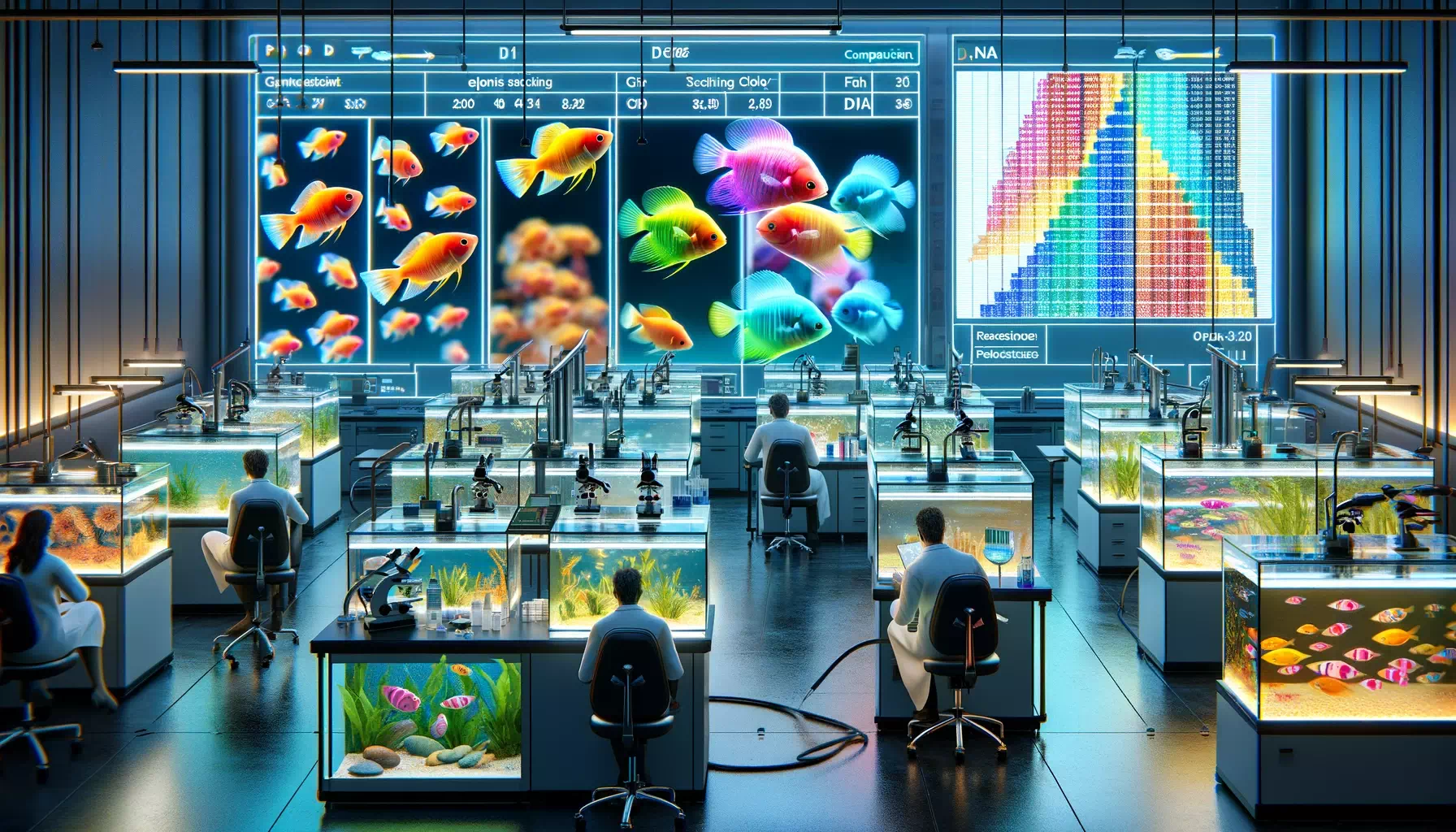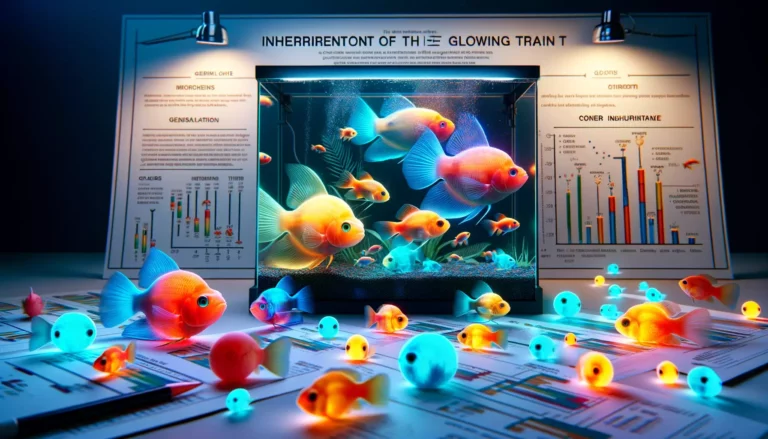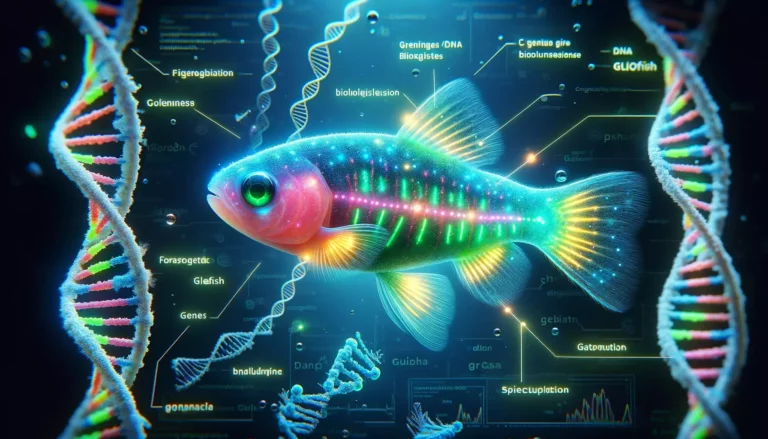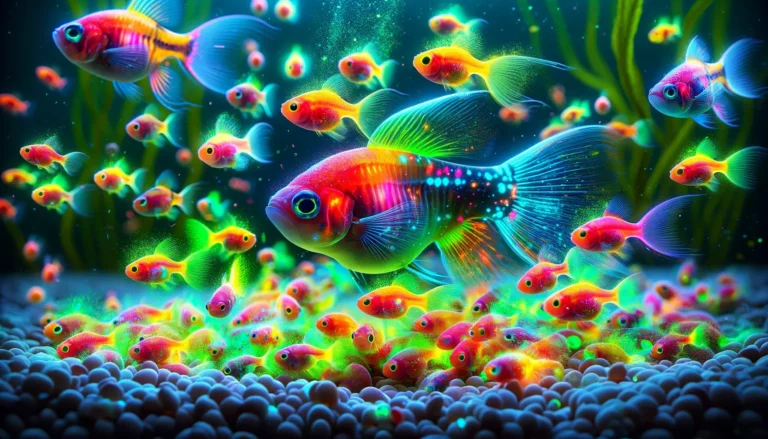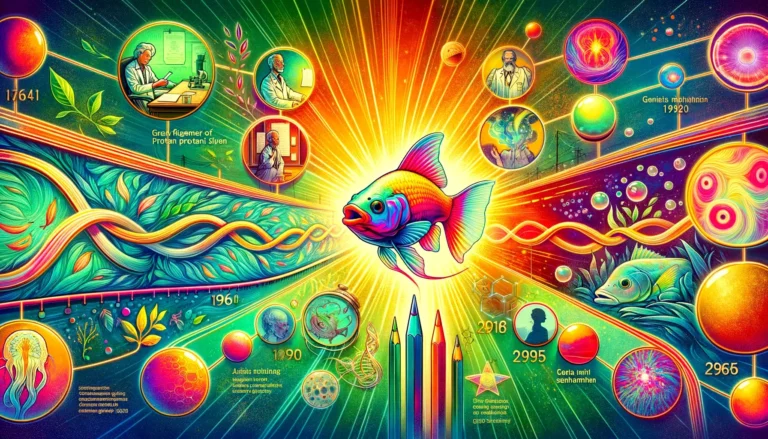Projects and research are related to the genetic aspects of GloFish
GloFish are known for their vibrant colors. These colors result from genetic modifications. A fluorescent gene from marine organisms is inserted. This gene is responsible for the fish’s bright hues.
The process involves transferring the gene into fish embryos. This is done at a very early developmental stage. As the fish grow, the gene integrates into their genome. It expresses itself in specific tissues, causing fluorescence.
Different genes produce different colors. For example, a gene from coral might produce a red color. Jellyfish genes can result in green or purple hues. The color depends on the source of the fluorescent gene.
The creation of GloFish is a marvel of genetic engineering. It demonstrates the potential of DNA manipulation. This technology allows for a variety of vibrant colors in aquarium fish.
Recent Advancements in GloFish Genetic Research

GloFish genetic research has seen significant advancements. Researchers are exploring more efficient gene transfer methods. This could result in brighter and more diverse colors.
Advances also involve better understanding gene expression. Scientists are studying how these genes interact with fish DNA. This could lead to more predictable color patterns. They are also exploring ways to enhance the vibrancy and longevity of these colors.
Another area of advancement is in ethical and safe genetic practices. Ensuring that these modifications do not harm the fish is crucial. Research is focused on minimizing any negative impact on the fish’s health.
Recent research is making GloFish more vibrant and diverse. These advancements could lead to new possibilities in the aquarium industry. They also provide valuable insights into genetic engineering as a whole.
Impact of Genetics on GloFish Health and Lifespan
The genetic modifications in GloFish raise questions about their health and lifespan. Research indicates that these genetic changes do not significantly impact their overall health. The lifespan of GloFish is comparable to their non-modified counterparts. This suggests that the fluorescent gene does not harm their longevity.
However, the impact on health is a complex issue. It’s not just the genetic modification but also the aquarium environment that plays a role. Proper care and habitat are essential for their well-being. GloFish require environments that meet their specific needs.
Studies are ongoing to monitor long-term health effects. Researchers want to understand if the fluorescent gene affects them over time. They are looking at factors like stress, disease susceptibility, and overall vitality.
Ensuring the health of GloFish is an ongoing commitment. Both geneticists and aquarists contribute to this. Maintaining their well-being requires a balance of careful genetic engineering and proper aquarium care.
Ethical Considerations in GloFish Genetic Engineering
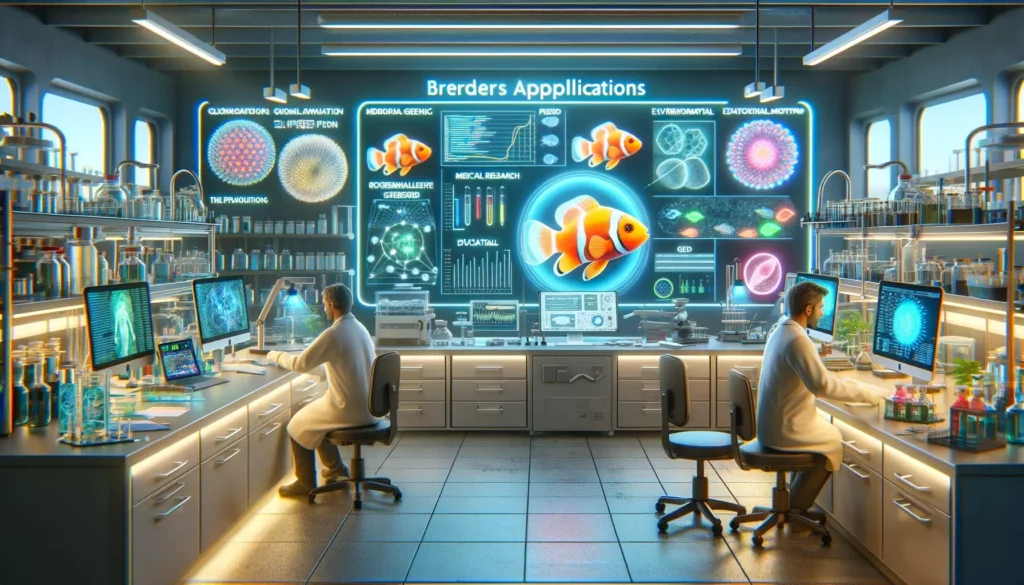
Ethical considerations are central to the discussion on GloFish genetic engineering. The main ethical question revolves around the justification for modifying animals for aesthetic purposes. Critics argue that altering an animal’s genetics for visual appeal raises moral concerns.
There’s also the issue of animal welfare. It’s crucial to ensure that genetic modifications do not cause harm or suffering. The welfare of GloFish is of paramount importance. This includes their physical health and psychological well-being.
Another ethical aspect is environmental responsibility. There are concerns about the potential release of GloFish into the wild. Researchers and regulators work to prevent any negative environmental impacts. GloFish are typically sterilized to prevent breeding in natural habitats.
The ethical debate in GloFish genetic engineering is ongoing. It involves balancing scientific innovation with moral responsibility. Awareness and discussion are key in navigating these ethical waters. This helps in making informed and responsible decisions in genetic engineering.
Ensuring Genetic Stability of GloFish Over Generations
The genetic stability of GloFish over generations is a critical aspect of their development. Maintaining consistent and stable genetic traits is essential. This ensures that the fluorescent characteristics remain intact in future generations. Scientists achieve this through controlled breeding practices.
Controlled breeding involves selecting fish with the desired traits. These selected fish are then bred to produce offspring. This selective process helps maintain the fluorescent gene’s integrity. It also ensures that the desired coloration passes on to future generations.
Another method involves continuous genetic monitoring. This is to ensure that the fluorescent gene remains stable. Geneticists regularly check for any mutations or changes. They also look for any signs of genetic drift.
Ensuring genetic stability in GloFish requires meticulous scientific methods. It’s a combination of controlled breeding and continuous genetic monitoring. This approach ensures that the unique qualities of GloFish are preserved over time.
Research on Environmental Impacts of GloFish Genetics
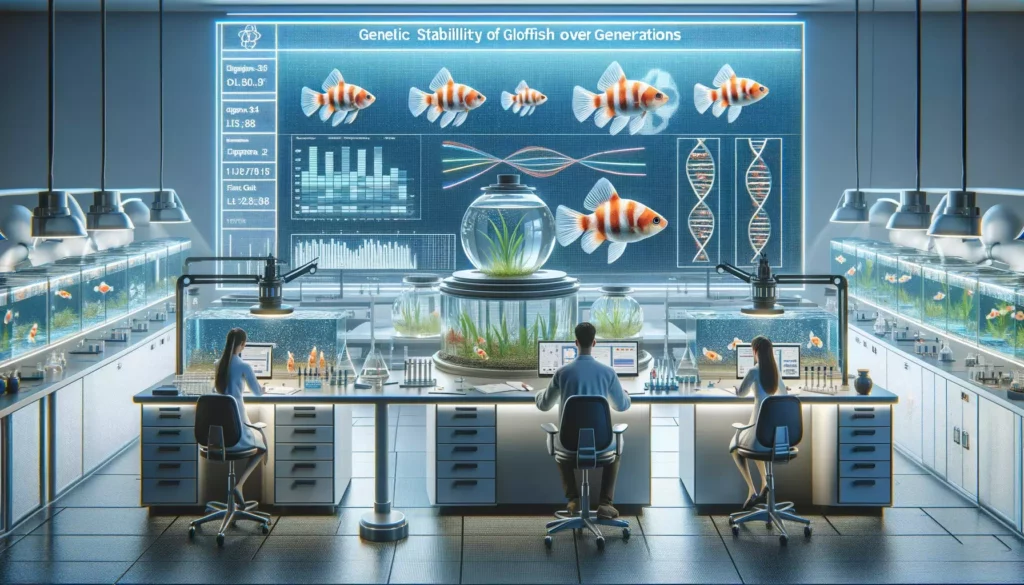
Research on the environmental impacts of GloFish genetics is crucial. The primary concern is the potential impact on natural ecosystems. Scientists and regulatory bodies focus on understanding how GloFish could affect biodiversity if released into the wild.
One aspect of research involves assessing the survivability of GloFish in natural habitats. Studies examine if GloFish can survive and reproduce outside controlled environments. This includes looking at their ability to compete for resources and resist predators.
Another important area is the potential for gene transfer. Researchers study the likelihood of the fluorescent gene transferring to wild fish populations. This is crucial in understanding the ecological risks.
Regulations and precautions are in place to mitigate risks. GloFish are typically sterilized to prevent breeding in the wild. This is a preventive measure against uncontrolled spread in natural habitats.
Research into the environmental impacts of GloFish genetics is ongoing. It aims to ensure that the introduction of GloFish into the market does not disrupt natural ecosystems. This research is vital for responsible and sustainable use of genetic engineering in the pet industry.
Broader Applications of GloFish Genetic Research
The genetic research behind GloFish has broader implications beyond the aquarium industry. This research offers insights into genetic engineering techniques applicable in various fields. For instance, the methods used in GloFish development can aid medical research. They can help in understanding gene functions and disease mechanisms.
Another application is in environmental monitoring. Similar to how GloFish were initially intended to detect pollutants, this concept can be expanded. Genetically engineered organisms could potentially indicate environmental changes or contamination.
- Medical Research: The genetic engineering techniques used in creating GloFish can be applied to understanding gene functions and disease mechanisms in humans and other animals. This research can potentially lead to breakthroughs in the field of medicine and the development of new treatments.
- Environmental Monitoring: Just as GloFish were originally designed to detect pollutants in water, genetically engineered organisms could be used for monitoring environmental changes and detecting contamination in ecosystems. This application has the potential to enhance environmental conservation efforts.
- Education: GloFish’s vibrant colors and the genetic principles behind their modification make them valuable educational tools. They can be used to teach genetics, biotechnology, and environmental science in an engaging and hands-on manner, fostering scientific curiosity and knowledge among students.
- Cross-Disciplinary Impact: The research on GloFish showcases how advancements in genetic engineering can have far-reaching effects across various scientific disciplines. It highlights the interconnectedness of science and its practical applications.
There’s also potential in educational fields. GloFish can serve as a tool for teaching genetics and biotechnology. Their vivid colors and the science behind them make for engaging educational material.
GloFish genetic research opens doors to various scientific and practical applications. It’s a testament to how advancements in one area can benefit multiple disciplines. This research extends the boundaries of genetic engineering and its practical uses.
Variations in Genetics Across GloFish Species and Colors
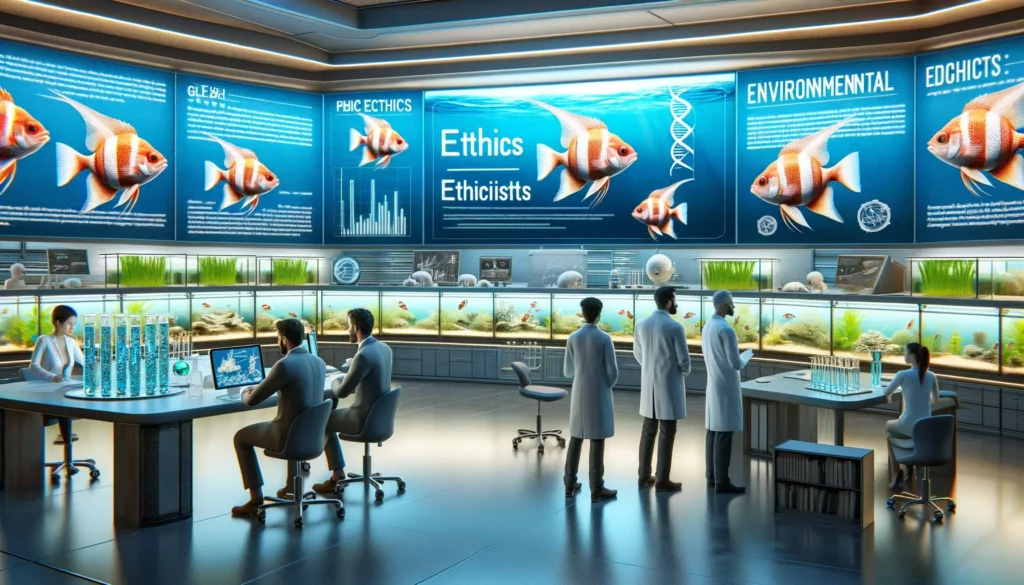
GloFish come in a variety of species and colors, each with its own genetic makeup. The genetic variations are responsible for the distinct colors and patterns seen in different GloFish species. For example, the gene responsible for the red fluorescence in GloFish comes from sea anemones. In contrast, the green fluorescence gene originates from jellyfish.
Each GloFish species is genetically engineered to express these colors in specific ways. This results in the unique coloration patterns seen in species like Danios, Tetras, and Barbs. The genetic engineering process is tailored to ensure that each species expresses the desired color effectively and safely.
The variations in genetics also mean that the care and breeding of each species might differ slightly. Specific environmental conditions might be better suited for certain genetic variations. This ensures the health and vibrancy of the fish.
Understanding the genetic variations across GloFish species and colors is key to their care and breeding. It highlights the complexity and precision involved in genetic engineering. Each species and color variation of GloFish is a result of meticulous genetic modification, catering to both aesthetic appeal and biological viability.

